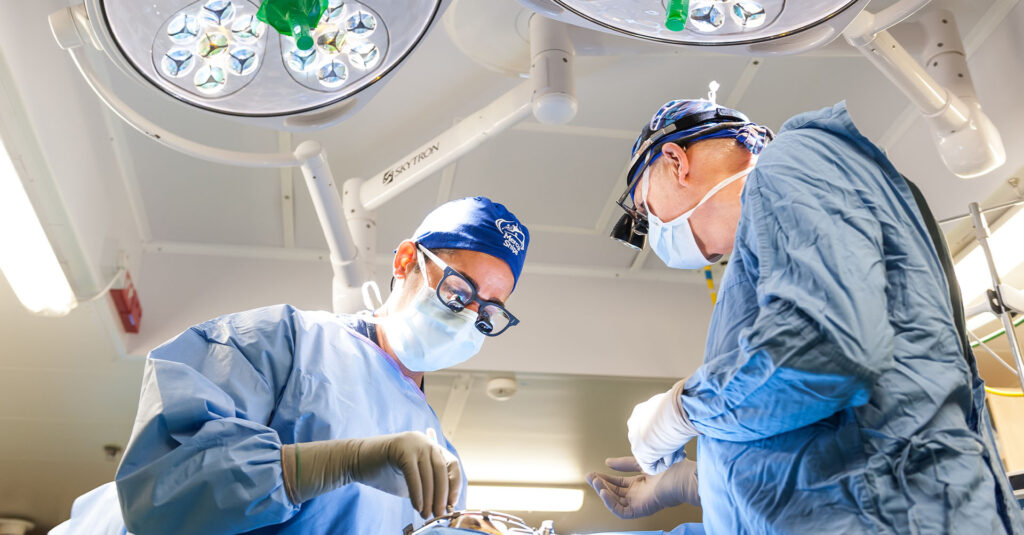
As medical knowledge and surgical techniques continue to advance, complications associated with breast augmentation are becoming less and less common.
However, as with all surgical procedures, patients’ bodies react differently, and complications can sometimes arise. One of the most common complications of breast augmentation surgery is known as capsular contraction.
Capsular contraction involves the hardening of the tissue that surrounds the implant, and it is the result of the body’s immune response to the foreign implant. This condition can lead to discomfort, even pain, and can affect the aesthetic appearance of the affected breast.
Here, Dr. Josh Waltzman of The Waltzman Institute discusses precisely what we know about capsular contraction and the surgical techniques that can be applied to reduce the likelihood that it will occur.
Much research has been conducted on what capsular contraction is and why it occurs in some patients and not others. During breast augmentation surgery, an external incision is made in the patients’ skin and musculature, and the implant is inserted into a pocket of tissue that contains the implant. The body then grows scar tissue around the implant, which creates an isolated capsule that keeps the implant in place and prevents it from slipping.
Capsular contraction occurs when the tissue surrounding the capsule and the implant becomes firm and rigid. This happens over time in some patients as a response to the presence of the implant. Most patients never experience any symptoms of capsular contracture. For those that do, the Baker classification system is used to determine the severity of the patient’s capsular contracture.
It is estimated that roughly 1 in 6 breast augmentation patients will experience some degree of capsular contraction. The severity of each case is ranked on a scale of I-IV.
Baker I: Capsular contraction is asymptomatic. The formation of the capsule has no effect on the size, shape, texture or sensation of the breasts, and the breasts appear natural and are soft.
Baker II: There is no discomfort or deformation of the breast, but the nipple can feel ‘tight’, or slightly firm to touch.
Baker III: This level of capsular contraction creates abnormality in the appearance of the breasts, and they will feel firm. Breasts may be excessively round with unusual nipples. However, there is generally no pain associated with Baker III capsular contraction.
Baker IV: This most extreme stage of capsular contraction has the aesthetic appearance and feel of level III, but is accompanied by pain and discomfort.
Whether or not you experience capsular contracture depends mostly on aspects of your body and immune system, but it can also be influenced by operation techniques and surgical procedures.
Capsular contraction may be influenced by genetic traits, such as predispositions to thick scarring or autoimmune diseases. Other complications, such as bacterial infections, hematomas or blood clots, may also prompt the body to develop thickened capsules around the breast implants.
Capsular contraction is caused by the excessive activity of ‘fibroblasts’ at the implant location. These are collagen-producing cells that boost collagen levels to very high levels that result in the formation of the rigid structure.
Procedural variations have been shown to influence the development of capsular contraction.
Placing the implant behind the pectoralis major muscle reduces the likelihood of capsular contraction. The process is not fully understood, but experts believe it may be due to the contact surfaces between the body and the implant.
Surgeons who used an insertion funnel during the initial breast augmentation procedure have experienced less occurrence of capsular contraction. This may be explained by reduced skin contact and potential contamination during implant insertion, which could decrease the likelihood of capsular contraction following the surgery.
Some early studies suggest that flushing the implant pocket with a sterilizing solution of povidone and iodine can adequately clean the area and reduce the risk of capsular contraction.
Further investigation is necessary to determine the precise mechanisms that cause some patients to develop varying degrees of capsular contraction. Nonetheless, patients can take steps to reduce the chance that they themselves will experience any level of the complication.
By choosing an experienced, trained and recommended surgeon, such as Dr. Josh Waltzman, to perform their breast augmentation procedure, patients give themselves the best chance of obtaining beautiful, outstanding results.
Don’t hesitate to call (562) 448-6100 or fill out his online form now to arrange your breast augmentation consultation in Long Beach, CA.